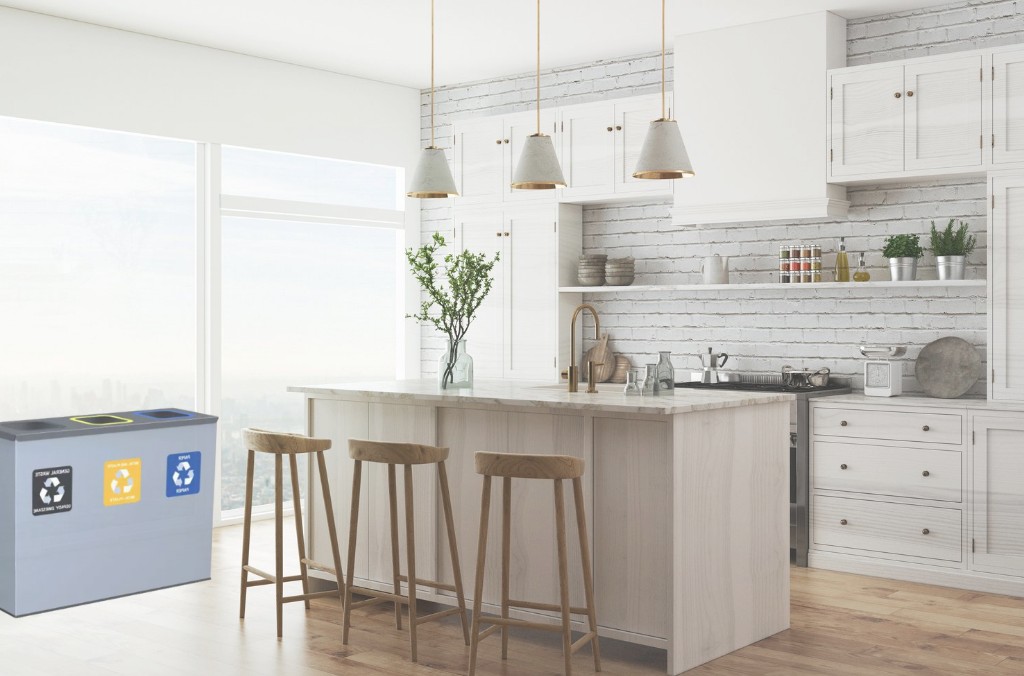Waste separation in the kitchen - choose the best waste bin to suit your needs

Waste separation in the kitchen - choose the best waste bin to suit your needs
Leftover food, cans, glass bottles and plastics are an everyday occurrence in every kitchen. At the same time, there is also a growing interest in ecology and an awareness of the need to care for the environment through proper organisation of space at home. Therefore, waste bins for homes should not only be easy to empty and clean, but also allow for proper waste separation.
What waste is generated in the kitchen
On average, studies show that Europeans produce around 500 kg of waste per person per year[1]. Kitchen waste is mainly vegetable residues, leftovers from the preparation of individual meals during the day. This includes sawdust, vegetable waste such as peelings, leftovers of flour products such as pasta and bread leftovers, as well as egg shells and grounds. The large kitchen waste bins are also full of food packaging, especially glass and plastic. Other kitchen waste includes tins, marinades and juice cartons.
Segregation rules for kitchen waste
Kitchen waste is not green waste. Kitchen waste is used to produce biogas, whereas green waste is used to produce compost. As a rule of thumb, kitchen waste, especially leftovers of fruit, vegetables, other food, fats and eggshells, should be disposed of in brown bins or bags for bio kitchen waste. The brown bio-green waste bag is for green waste, such as wilted herbs, cut and potted flowers. Mixed waste, such as bones, raw meat and leftover pet food, should be put in the grey bin for residual waste.
Which kitchen waste bin to choose
Today's market offers many interesting solutions. The capacity of the bin is important and should be tailored to your needs. Smaller segregated waste bins for the kitchen are neat and will certainly fit under the sink. The ideal solution can be found at (click here). The material of construction can also be important. The bin should be durable and not absorb bad smells. A great solution are those made of stainless steel, e.g. the 18-litre dustbin.se For modern kitchens, an innovative design is ideal, e.g. a basket made of eco-leather.
Where to place the waste bin in the kitchen?
Still the most popular choice is under-sink bins. This is a convenient option due to its proximity to the sink. Under-cabinet wastebaskets can be attached to the front of the cabinet or take the form of a drawer. If the lid of the built-in waste bin is attached to the side of the cabinet, then it can also act as a shelf. The kitchen is a problem with a lot of organic waste. It is therefore worth considering getting a separate and small container, which will be emptied frequently. Bins built into the kitchen worktop are still rare in Polish homes despite their practicality.
Waste separation is standard in every kitchen nowadays, so it's a good idea to consider many different options during the planning phase in order to find the best solution. Waste generated in kitchens should be systematically disposed of. This is best done in accordance with the legal regulations. Segregation of waste is ecological, but also hygienic and economical. Innovative solutions significantly facilitate waste separation, making the procedure easy and convenient.
[1] https://ekodrogeria.pl/blog/ile-smieci-rocznie-produkujemy
